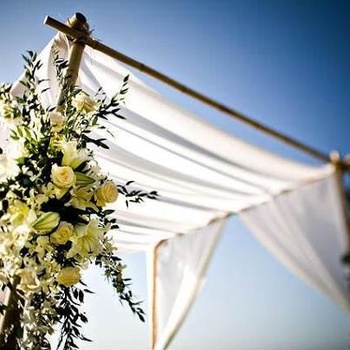
The marriage ceremony takes place beneath a Chuppah, which is a marriage canopy that sits atop four poles and is open on all sides. This is a demonstration of the couple's commitment to establish a home which will always be open to guests. Many have the custom for the chuppah to be held beneath the open skies. This recalls God's blessing to Abraham that his descendants be as numerous as the stars. The bride and groom are escorted to the chuppah by their respective parents. The groom is led to the chuppah first. The bride is then escorted to the chuppah, where she circles the groom 7 times. With these circles the bride is creating an invisible wall around her husband; into which she will step, to the exclusion of all others. The seven circles the bride walks around the groom also recall the seven times Joshua and the Israelites circled the walls of Jericho to bring down its walls, symbolizing how this marriage breaks down any remaining walls or barriers between the bride and groom. The rabbi holds a cup of wine and first recites kiddish, the standard blessing on wine, and then the kiddushin blessing, which thanks G d for sanctifying us with the mitzvah of marriage. After concluding the two blessings, the rabbi will hand the cup to the groom, who sips the wine. Then the groom lifts the cup to his bride’s lips for her to drink. Sipping from the same cup is symbolic of the entwined lives the couple will share. After the bride and groom sip from the wine, the groom places the wedding band on the bride's right index finger. While putting the ring on her finger, the groom says in Hebrew and English: "With this ring, you are consecrated to me according to the law of Moses and Israel. I am my beloved’s and my beloved is mine."
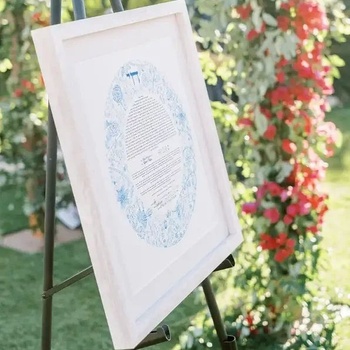
After the groom places the ring on the bride's finger, the ketubah is read aloud. The ketubah is a binding document which details the husband's obligations to his wife, showing that marriage is more than a physical-spiritual union; it is a legal and moral commitment. The ketubah states the principal obligations of the groom to provide his wife with food, clothing and affection along with other contractual obligations. After the ketubah is read, it is handed to the groom who gives it to the bride for safekeeping. Following the wedding, it is customary for the ketubah to be visibly placed in the bride & groom's home.
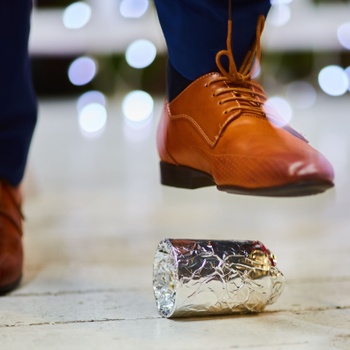
The focus now shifts to the next and final stage of the marriage ceremony, the Sheva Brachot: seven blessings in honor of the bride and groom, recited over another cup of wine, this one made of glass. The first blessing is the blessing on wine, and the remaining six are marriage-themed blessings, which include special blessings for the newlywed couple.
After the conclusion of the seventh blessing, the bride and groom once again sip from the same cup. The cup is then placed beneath the right foot of the groom. The groom stomps and shatters the glass, as both a symbol of the finality of the marriage ceremony, and a reminder that while the wedding is a joyous occasion, we should not forget the bad that remains in the world. It is customary for the crowd to shout "Mazal Tov!" once the glass is broken.
Immediately after breaking the glass, the bride and groom adjourn to the yichud room, where they spend a few minutes alone, while the guests enjoy cocktails.
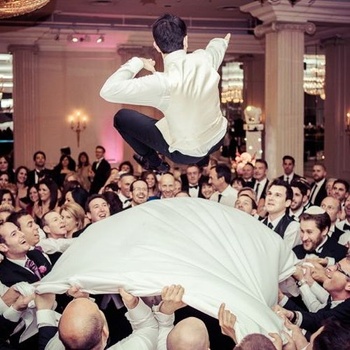
The traditional first dance for the wedding reception is the hora, a traditional folk dance in a circle in which all are encouraged to participate. Dancing the hora involves holding hands in a circle (or concentric circles), and the following two steps: Step to the left and cross the right foot in front of the left, then step to the left again, and cross the right foot behind the left. The circle can often change directions, in which case, switch feet. Throughout the hora, people may join or be brought to the center of the circle to dance with the couple and their immediate families. People often link arms and swing each other around in the center of the circles, as well as organize fun stunts, props and gifts for the bride and groom.
The most popular songs that are played during the hora dance are "Hava Nagila" (meaning "let's rejoice") and "Siman Tov U'Mazal Tov" (meaning "a good sign and good luck will come to us"), along with other Hebrew songs or Yiddish klezmer music. This is typically a very long, high energy dance.
As the dance progresses, chairs will be brought to the middle of the hora circles and the newlyweds will be encouraged to sit down. Then, guests hoist the chairs up, practically tossing the married couple into the air. There are no rules about who does the lifting—any strong guests are encouraged to participate and help lift the couple up during this portion of the hora. Lifting the couple up signifies how they are spiritually elevated on the day of their wedding. As the newlyweds are lifted up on the chairs, you might see them holding a napkin between them—each holding a side of the cloth, symbolizing the bond that has been formed between them. Once the bride and groom are put down from the chairs, their parents and siblings will also have turns being hoisted up in the chairs.
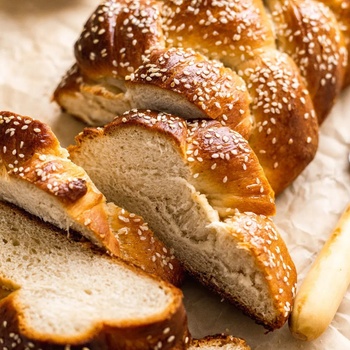
Following the hora and other songs, the meal begins with breaking bread. The hamotzie blessing is recited on an oversized challah bread, which is then sliced and shared with the crowd.